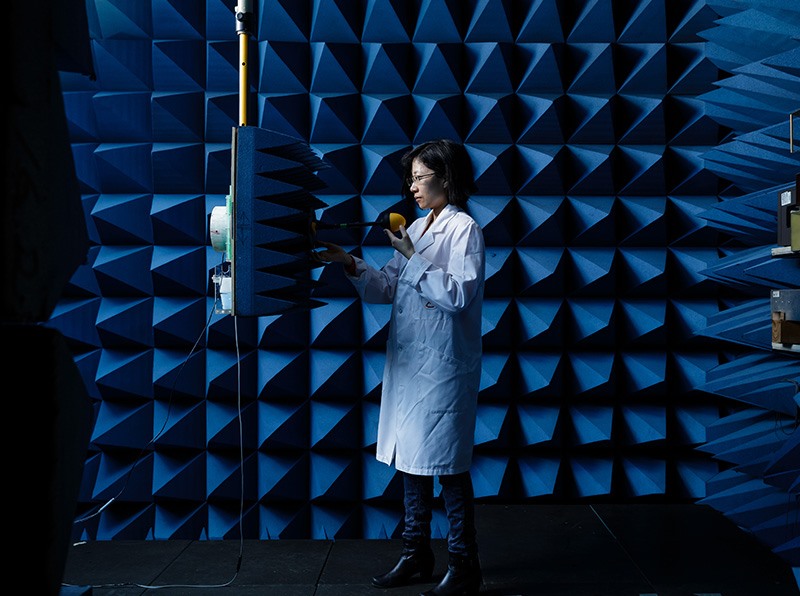The exposure limits in ARPANSA's Radiofrequency Safety Standard have been extensively reviewed by a wide range of experts. The limits are based on current scientific knowledge and are aligned with international guidelines prepared by the International Commission for Non-Ionising Radiation Protection and are endorsed by the World Health Organization.
Background

Radiofrequency electromagnetic energy (RF EME), is encountered everywhere in modern society. The most common exposure to RF EME occurs from telecommunications sources including mobile telephony networks, public broadcast infrastructure such as radio and TV, wireless technology such as Wi-Fi, and the use of personal devices including mobile phones, laptops and tablets. To protect the Australian community from the harmful effects of RF EME, ARPANSA published the ARPANSA Radiofrequency Safety Standard in 2002 based on guidelines developed by the International Commission on Non-Ionizing Radiation Protection (ICNIRP) in 1998.
Since the publication of the standard in 2002, research in the area of RF EME and health has grown rapidly. In March 2020 ICNIRP published updated guidelines for RF EME, taking into account current knowledge of how RF EME affects the human body. The updated guidelines are considered international best practice by ARPANSA and the broader scientific community, including the World Health Organization.
It is Australian Government policy to implement international best practice and to adopt international standards where they exist and can be applied to the Australian regulatory environment. This triggered ARPANSA to develop a standard called ‘Standard for Limiting Exposure to Radiofrequency Fields – 100 kHz to 300 GHz’ and bring Australia in line with international best practice.
The development process
To develop the new standard, ARPANSA reviewed the 2020 ICNIRP guidelines and other relevant scientific literature. The review was conducted to assess developments in the science and determine if any changes to the previous standard were required. Following the review, a draft standard was prepared and a public consultation process was conducted to allow stakeholders to review and make submissions on the content.
A total of 61 submissions from a range of stakeholders, including health authorities, scientists, academic bodies and members of the general public were received. This included technical comments, questions, and suggestions. All submissions were reviewed, and amendments were made, primarily to clarify technical aspects of the standard. The revised standard then underwent formal approvals prior to its eventual publication. These approvals are detailed below.
Scientific expertise

The new standard was prepared by a group of experts that also consulted with a wide range of other experts and organisations to gather the required scientific information for the development of the standard. This included expertise in the fields of physics, chemistry, biology, epidemiology, medicine and engineering.
The standard was approved by the Radiation Health Committee (RHC), which includes various expertise in radiation protection. It is the role of the RHC to provide advice on matters relating to radiation protection, including formulating draft national policies, codes and standards for consideration by the Commonwealth, states and territories. The Radiation Health & Safety Advisory Council were also consulted on the content of the standard as one of their primary functions is to consider the adoption of recommendations, policies, codes and standards.
Review of the literature
The exposure limits in the standard are based on scientifically substantiated effects and are underpinned by a review of all the available evidence. There are various types of studies that contribute to the pool of scientific evidence for RF EME exposure and health, including:
- epidemiological studies that investigate disease in human populations
- experimental studies on human volunteers, animals, tissues and cells
It is important to note that no single study considered in isolation will provide a meaningful answer to the question on whether RF EME can cause or contribute to adverse health effects in people. In order to make an informed conclusion from all the research studies, it is important to weigh the science in its totality.
Depending on the type of study (epidemiological or experimental), different criteria are used to determine whether an effect is substantiated (or verified), but there are several criteria common to all types of studies. In general, an effect needs to be observed in more than one study and studies should be performed according to accepted scientific practice and quality criteria. The evidence for an effect is further strengthened if the results from different types of studies (epidemiological and experimental) point to the same conclusion.
In order to determine the levels of RF EME that can cause harm to humans, experimental and computer modelling studies are conducted that investigate how RF EME is absorbed within the body, and at what levels health effects occur. The exposure limits in the standard are based on reviewing all the available evidence on the levels of RF EME that can cause health effects.
The safety limits

The standard protects everyone, including workers and members of the general public of all ages and health statuses against short and long-term effects of exposure to RF EME. As a precaution, the exposure limits are set well below the levels at which scientific research has shown harmful effects occur.
The exposure limits set in the new standard are similar to those in the old standard with some refinements. The limits in the new standard have been refined to account for increased knowledge on how RF EME is absorbed within the human body. The main changes in the limits of the new standard relate to additional safety restrictions for RF EME exposure at higher frequencies, above 6 GHz, which is of importance to 5G and other future technologies using these higher frequencies.
Apart from refining the exposure limits, the new standard provides other updates, including the requirements for protection of the general public and the management of risk to workers, together with additional information on verifying compliance with the limits of the standard.
Conclusion
The exposure limits in the standard have been extensively reviewed by a wide range of experts. The limits are based on current scientific knowledge and are aligned with international guidelines prepared by the International Commission for Non-Ionising Radiation Protection and are endorsed by the World Health Organization. The exposure limits are designed to protect people of all ages and health statuses. ARPANSA will continue to assess the evidence into RF EME and health to provide the best protection for the Australian community.


